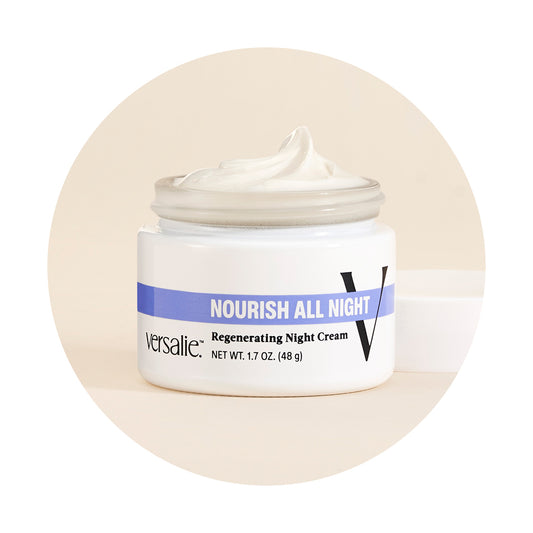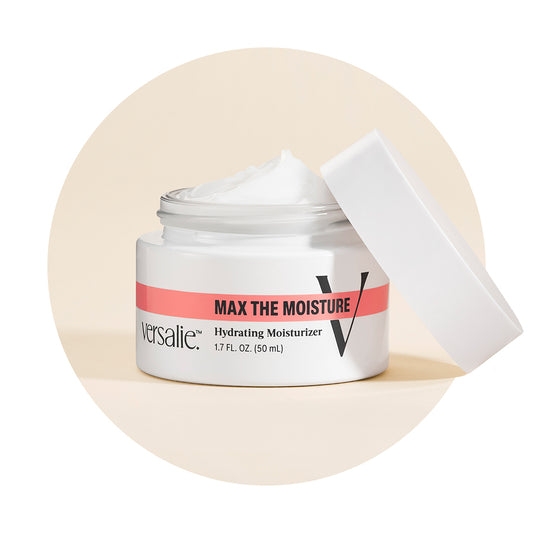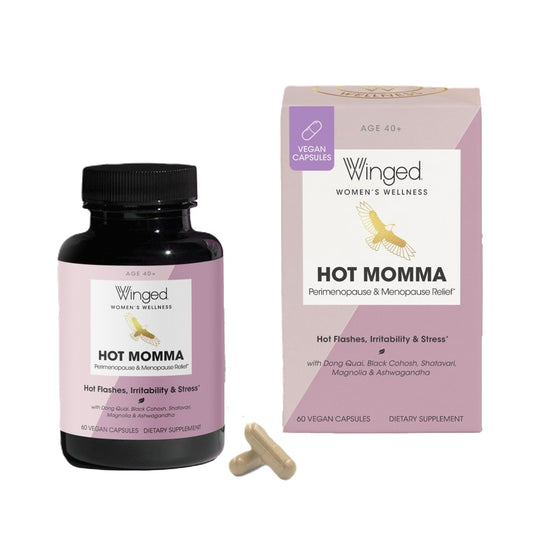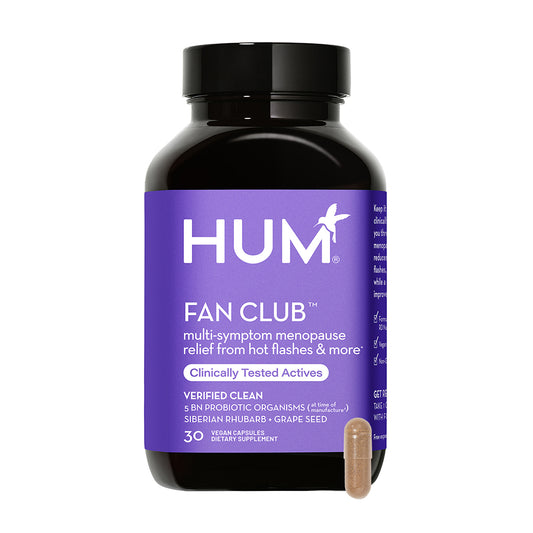Spring is a fantastic time to make healthy changes to your eating habits for several reasons. First, the season is synonymous with renewal and growth, inspiring many to refresh their lifestyle and eating habits. Spring brings an abundance of fresh fruits and vegetables, making it easier to incorporate more fiber and a variety of vitamins, minerals, and antioxidants into your diet. Spring's fresh produce also supports lighter, more vibrant meals that can help shake off the heavier eating habits of winter and support overall menopause health.
Talk to your healthcare provider before making any changes to your diet and if you have any questions about your menopause journey.
Here are some of my top choices for spring foods for menopausal health.
What are the potential benefits of asparagus for menopausal health?
Asparagus is packed full of vitamins A, C, E, and K. Important functions of these vitamins include:
- Vitamin A is essential for immune function and maintaining healthy skin. It can help counter the dry and thinning skin that may accompany menopause.
- Vitamin C boosts collagen production, promoting skin elasticity and aiding joint health.
- Vitamin E acts as a potent antioxidant, potentially alleviating hot flashes and improving skin health.
- Vitamin K supports bone health, helping to maintain bone density and strength as you age.
Additionally, asparagus is rich in folate and chromium. Folate, or Vitamin B9, may help with menopause-related fatigue. Chromium can help with blood sugar regulation, which may help with maintaining a healthy weight during menopause.
Spring asparagus makes a great vegetable side dish when lightly sauteed in avocado oil and garnished with lemon zest and a sprinkling of salt and pepper.
How can radishes potentially benefit menopausal health?
Radishes are packed with Vitamin C, dietary fiber, and water content. Vitamin C is an antioxidant that can help neutralize free radicals in the body. Free radicals can cause inflammation, which can make menopause symptoms like hot flashes and mood swings worse. They can also cause oxidative stress, which happens when there’s an imbalance between free radicals and antioxidants in the body. Vitamin C also plays a key role in collagen synthesis which is essential for maintaining skin elasticity and health and for strengthening the immune system that may become less efficient during menopause.

Radishes are a great source of dietary fiber. Increasing your fiber intake during the menopause transition is one way you can improve many areas of menopausal health. It can help with blood sugar regulation and weight management, gut health and digestion, and improving cholesterol levels. Radishes also have a high water content which is helpful for staying hydrated which may help relieve menopause-related fatigue and brain fog.
Radishes are a nice addition to any spring salad, and they feature in our Spring Citrus Salad with Crisp Shallot Vinaigrette recipe below.
What are the potential benefits of grapefruit for menopausal health?
Grapefruit is packed with antioxidants, including Vitamin C, which has been shown to help with cognitive benefits in some studies. Oxidative stress can escalate with age, making the antioxidant properties of grapefruit especially beneficial during the menopause transition. Antioxidants have been linked to improved mood and cognitive function and may also support brain health. This may help with enhancing mood and mental clarity during menopause.
Grapefruit contains heart-healthy flavonoids that have been linked to helping reduce risk factors for heart disease, such as lowering high blood pressure and cholesterol levels. These are important factors to consider during and after the menopause transition.
Grapefruit also has a low glycemic index and high fiber content, which can help with blood sugar balance and weight management by curbing cravings and promoting a feeling of fullness and satiety
Top unsweetened Greek yogurt with grapefruit segments and chopped nuts for a balanced breakfast or enjoy as part of the Spring Citrus Salad with Crisp Shallot Vinaigrette recipe below.
How can mint potentially benefit menopausal health?
Fresh mint may help with digestive health by stimulating bile production. Bile is an essential digestive juice that plays a crucial role in the breakdown, digestion, and regulation of fat in the diet.
Mint also contains phytoestrogens which may be useful in managing menopause symptoms, due to their estrogen-mimicking properties. Furthermore, mint is rich in antioxidants, which play a critical role in protecting the body against oxidative stress and inflammation, conditions that can be heightened during menopause.
Fresh mint can be enjoyed as a hot or iced tea (add a squeeze of lemon juice for extra Vitamin C) or in our Lemon and Mint Breakfast Smoothie recipe below.

What are the potential benefits of lamb for menopausal health?
Lamb is a high-quality protein source that helps maintain lean muscle mass and supports bone health. During menopause, the risk of sarcopenia (loss of muscle mass) increases, making it essential to consume adequate, high-quality protein to help counteract this effect. Protein also plays a role in bone health, which is of particular concern during menopause due to the increased risk of osteoporosis. Lamb not only provides a rich source of protein but also contains amino acids essential for muscle repair and growth.
Lamb is also an excellent source of both iron and B vitamins, both of which are essential for healthy energy production which can be challenging during menopause. Additionally, lamb offers omega-3 fatty acids, known for their anti-inflammatory properties and benefits for supporting cardiovascular and brain health. Choose lean cuts and enjoy in our Lamb Meatballs w/ Tzatziki Sauce recipe below.
Can you provide a recipe for a menopause-friendly smoothie?
Lemon and Mint Breakfast Smoothie
- 1 serving vanilla protein powder
- 1 lemon, peeled
- 2 cups frozen spinach
- ¼ zucchini
- ¼ avocado
- 1/4 cup fresh mint, chopped
- 1 tablespoon acacia fiber (ground flaxseed or chia seeds are great alternatives)
- 1 cup unsweetened almond milk
Place all ingredients in a blender and blend until smooth.
Can you provide a recipe for a menopause-friendly salad?
Spring Citrus Salad with Crisp Shallot Vinaigrette
For the salad
- 5 cups mixed greens or 2 heads romaine
- 2 sprigs fresh mint, chopped
- 3 radishes, sliced
- 1 blood orange, peeled and sliced
- ½ grapefruit, peeled and sectioned
- 1 avocado, sliced
- 2-3 tablespoons pine nuts
For the shallot dressing - ⅓ cup organic olive oil
- 1 shallot, peeled and finely chopped
- ½ to 1 clove garlic, minced
- Juice of 1 lemon
- ½ tablespoon apple cider vinegar
- 1 teaspoon Dijon mustard
- Salt & pepper to taste
Assemble the salad ingredients onto a plate or bowl. Make the dressing by whisking all ingredients in a separate bowl or jar. Pour the dressing over the salad, toss, and serve.

Can you provide a recipe for a menopause-friendly meat dish?
Lamb Meatballs with Tzatziki Sauce
For the meatballs:
- 1 lb ground lamb
- ⅓ cup almond flour crackers
- 2 scallions (white & green parts)
- 1 egg (pasture-raised, if possible)
- 2 cloves garlic, peeled & minced
- 1 tablespoon dried parsley (or 1 tablespoon fresh, finely chopped)
- ½ teaspoon dried rosemary
- 1-2 sprigs fresh mint, finely chopped (optional)
- ½ teaspoon salt
- ½ teaspoon pepper
For the sauce:
- 1 cup organic, grass-fed, whole milk Greek yogurt (or unsweetened Greek yogurt)
- 2 tablespoons organic olive oil
- ⅓ cup finely chopped cucumber
- 1 garlic clove minced
- Juice of ½ to 1 lemon
- ⅓ cup fresh dill (or 1 tablespoon dried)
- Salt & pepper to taste
Instructions:
- Preheat oven to 375°F.
- Take the almond flour crackers and process them in a food processor or high-speed blender.
- In a medium bowl, combine the ground lamb, ground crackers, and the remaining ingredients and mix well.
- Form meatballs into balls about 1 inch in diameter and place the meatballs 2 inches apart on a baking sheet. Bake for around 16 minutes. The edges of the meatballs should be brown and the inside of the meatballs slightly pink. The internal temperature should be at least 145°F.
- While the meatballs bake, mix all the sauce ingredients in a bowl. Chill in the fridge until serving.
- Assemble. You can serve the meatballs and sauce over cauliflower rice. If you don’t want to use rice, simply eat the meatballs with the sauce drizzled over top.
Learn more about Jennifer Hanway and our other Versalie advisors.








